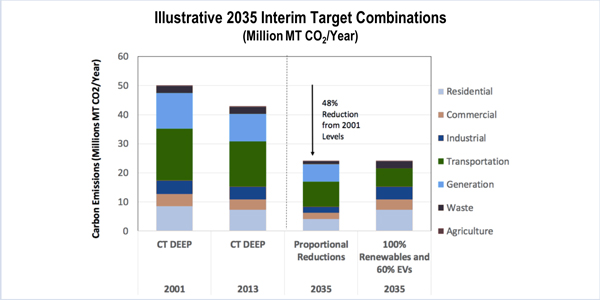By Michael Kuser
Connecticut regulators are getting mixed signals from power industry participants as they approach a Feb. 1 deadline for issuing a report on the economic viability of the Millstone nuclear power plant.
While some stakeholders say Millstone may be the most profitable nuclear plant in the country, others contend the plant must contract directly with the state in order to remain operational.
Gov. Dannel Malloy last July ordered the state Department of Energy and Environmental Protection (DEEP) and the Public Utilities Regulatory Authority to assess the current and future viability of the plant and determine whether the state should provide financial support (17-07-32). (See CT Gov Orders Financial Analysis of Millstone Plant.)
The governor’s move came a month after the state’s General Assembly failed to pass a bill that would have allowed the 2,111-MW nuclear plant in Waterford to bid into the state’s procurement process reserved for renewable energy resources such as large-scale hydropower, wind and solar (S.B. 106).
Plant owner Dominion Energy is seeking guaranteed state contracts for its nuclear units, claiming they operate under the same financial constraints from low natural gas prices that led New York and Illinois to provide state subsidies for some of their nukes.
The Electric Power Supply Association filed comments with the state this month, contending that Millstone’s profitability made any ratepayer subsidy unnecessary.
“EPSA believes — and the draft Levitan report confirms — that Millstone will remain economically viable through 2035,” said EPSA, referring to a Levitan & Associates report sent to the governor last month. (See Millstone Likely Profitable Through 2035, Conn. Consultant Says.)
EPSA also submitted a new study by Energyzt Advisors that said “numerous studies have shown that the plant is profitable — perhaps the most profitable nuclear plant in the United States.” The study also recommended regulators put a “price or cap on carbon for all sectors in the state and let market forces determine which carbon reduction investment provides the greatest payback.”
EPSA CEO John E. Shelk said Energyzt’s new analysis “identifies a wide range of strategies state policymakers can implement to protect and grow jobs, manage costs and reduce emissions for the long term.”
Dominion: Flawed Economics
Dominion’s Jan. 8 filing with DEEP and PURA accused the Levitan study of “mixing apples and oranges” in using the company’s regulated, Virginia-based nuclear plants as a proxy for Millstone’s cost projections.
“Millstone Unit 2 and Unit 3 are entirely different designs requiring separate control rooms, separate spare parts inventory, distinct operator training and separate teams of licensed operators,” Dominion said. “In addition, Millstone’s larger physical footprint requires a larger security staff and has higher site maintenance costs including utility costs, building maintenance and snow removal.”
Dominion also cited higher labor costs in Connecticut, saying its plants in Virginia are located in lower-cost rural areas.
In addition, Dominion said the Levitan report “understates the upcoming capital requirements of Millstone as critical station components reach their end-of-life cycle and need to be replaced to maintain the company’s core commitments of safety and operational efficiency. It is important in this regard not to confuse operating cash flow, much of which must be reinvested in the capital needs of the station, with profitability.”
The General Assembly submitted comments last week encouraging PURA and DEEP to “hedge against natural gas by opening a bidding process to receive bids from nuclear generating facilities, including Millstone, to purchase power directly by long-term contract.”
The legislators argued that “since Millstone’s power is currently purchased by hedge funds and financial institutions, these groups are receiving the benefit of price spikes today due to the current ‘cold snap.’”
Environment and Markets
Environmental organization Citizens Campaign for the Environment, which has more than 80,000 members in Connecticut and New York, said that it “strongly opposes any special deals for nuclear power under our state’s energy procurement markets. Allowing Millstone to compete with up-and-coming renewable technologies like wind and solar power would unfairly force Connecticut ratepayers to foot the bill for an antiquated, and yet highly profitable, power source.”
The Conservation Law Foundation submitted a draft proposal for a Dynamic Forward Clean Energy Market (DFCEM) that would allow Connecticut and other states in the region to procure clean and renewable electricity via a market administered by ISO-NE.
“The DFCEM market mechanism would allow Connecticut to procure the environmental attribute of new and existing zero-emission resources, including nuclear, on a least-cost basis through an auction mechanism that places all emissions-reducing resources on equal footing while allowing Connecticut to share emissions compliance costs with other states fairly and in proportion to each state’s climate and energy laws and regulations,” CLF said.
The group did not specifically address the issue of Millstone’s financial viability, but it referred to a November 2017 report by The Brattle Group that assumed “nuclear plants (with the exception of Pilgrim) retire after 60 years in service, or earlier if going-forward costs exceed market revenues.”


